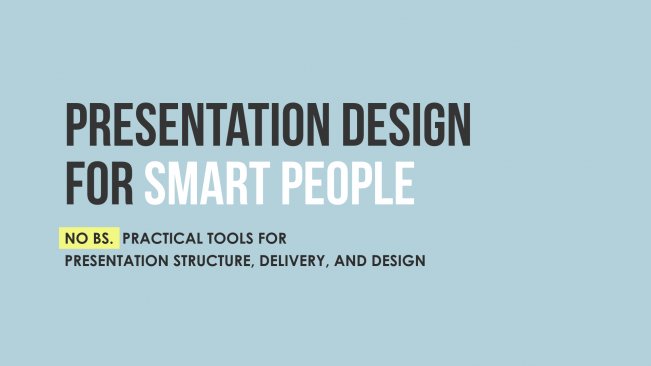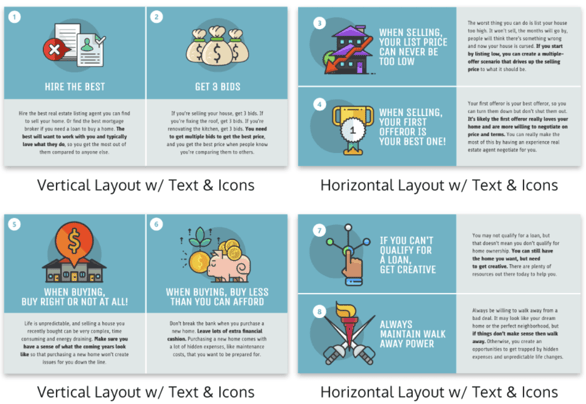Transforming Business Narratives: From Status Quo to Solution
Master the art of crafting compelling narrative arcs that transform your pitch presentations
In the world of business presentations, I've found that a compelling narrative can make all the difference between securing investment and walking away empty-handed. The journey from highlighting a problem to revealing your solution is more than just a presentation structure—it's a psychological journey that can captivate your audience and make your pitch unforgettable.
Throughout this guide, I'll walk you through my proven approach to crafting powerful status quo to solution narratives that resonate with investors, stakeholders, and customers alike. We'll explore the psychology behind effective storytelling, practical techniques for visualizing your narrative, and strategies for adapting your story to different audiences.

The classic status quo to solution arc creates a powerful psychological journey for your audience
Understanding the Status Quo-Solution Framework
When I create pitch presentations, I always start by understanding the psychological foundations of effective storytelling. The status quo-solution framework isn't just a presentation template—it's rooted in how our brains process information and make decisions.
The Psychology Behind Problem-Solution Narratives
Our brains are wired to respond to tension and resolution. When we encounter a problem, our cognitive systems immediately begin searching for solutions—it's a survival mechanism that's deeply embedded in our psychology. As startup storytelling experts know, this makes the problem-solution format particularly compelling for investors and stakeholders.
"The human brain consumes stories differently than raw data. When we experience a well-structured narrative, our brains release oxytocin—the chemical responsible for empathy and connection."
Visual Enhancement of Business Storytelling
Visual elements dramatically increase the impact of your narrative. When I incorporate thoughtful visualizations into my presentations, I've found they can:
- Increase information retention by up to 65%
- Reduce the cognitive load required to understand complex concepts
- Trigger emotional responses that text alone cannot achieve
- Create memorable anchors that help your audience recall key points
The Cognitive Science of Effective Pitches
Research in cognitive science reveals that our brains are particularly receptive to narratives that follow a specific structure. When creating a startup pitch deck, I make sure to leverage these cognitive principles:
flowchart TD
A[Attention Capture] -->|Creates| B[Cognitive Tension]
B -->|Builds| C[Emotional Investment]
C -->|Seeks| D[Resolution/Solution]
D -->|Provides| E[Satisfaction & Relief]
E -->|Motivates| F[Action]
style A fill:#FF8000,stroke:#333,stroke-width:2px,color:white
style B fill:#FF8000,stroke:#333,stroke-width:2px,color:white
style C fill:#FF8000,stroke:#333,stroke-width:2px,color:white
style D fill:#FF8000,stroke:#333,stroke-width:2px,color:white
style E fill:#FF8000,stroke:#333,stroke-width:2px,color:white
style F fill:#FF8000,stroke:#333,stroke-width:2px,color:white
Identifying Your Authentic Status Quo Challenge
The foundation of any compelling pitch narrative is a clearly defined problem. In my experience, the most successful pitches don't just identify any problem—they uncover authentic challenges that resonate with the audience on both logical and emotional levels.
Articulating Market Pain Points
When developing a business overview pitch deck, I focus on articulating pain points with precision and impact. Here are the methods I've found most effective:
Direct Customer Insights
Incorporate actual customer quotes and testimonials about the problem. These authentic voices lend credibility and emotional weight to your status quo description.
Market Research Statistics
Quantify the problem with specific data points that demonstrate scope and impact. Numbers create concrete understanding of abstract challenges.
Competitive Landscape Analysis
Show how existing solutions fall short, creating a clear opportunity gap that your solution will address.
Trend Visualization
Demonstrate how the problem is evolving or growing over time, creating urgency around addressing it now rather than later.
Quantifying the Problem with Data Visualization
Abstract problems become concrete when supported by compelling data visualizations. I've found that PageOn.ai's Deep Search functionality is particularly helpful for integrating relevant market statistics into my presentations.
Creating a "Day in the Life" Scenario
One of my most effective techniques is creating a "day in the life" scenario that illustrates how the problem affects real people. This approach transforms abstract challenges into relatable human experiences.

"The most compelling problem statements don't just describe what's wrong—they make your audience feel the pain and frustration of the status quo."
When working with pitch deck consultants, I've noticed they always emphasize the importance of balancing emotional appeal with factual evidence. Your problem statement must be authentic and credible—overstating or manufacturing problems will undermine your credibility with savvy investors and stakeholders.
Building the Tension Bridge
After establishing the status quo problem, I focus on building what I call the "tension bridge"—the narrative space between problem and solution that heightens audience investment and creates anticipation for your reveal.
Strategic Storytelling Techniques
My approach to building tension involves strategic storytelling that gradually increases the audience's emotional investment. Here are the techniques I use most frequently:
flowchart TD
A[Establish Status Quo Problem] -->|Escalate| B[Show Ripple Effects]
B -->|Quantify| C[Calculate Cost of Inaction]
C -->|Personalize| D[Share Stakeholder Impact]
D -->|Project| E[Future Consequences]
E -->|Contrast| F[Solution Introduction]
style A fill:#FF8000,stroke:#333,stroke-width:2px,color:white
style B fill:#FF9933,stroke:#333,stroke-width:2px,color:white
style C fill:#FFB366,stroke:#333,stroke-width:2px,color:white
style D fill:#FFCC99,stroke:#333,stroke-width:2px,color:black
style E fill:#FFE5CC,stroke:#333,stroke-width:2px,color:black
style F fill:#E5F2FF,stroke:#333,stroke-width:2px,color:black
Visualizing the Cost of Inaction
One of the most powerful tension-building techniques I use is visualizing the cost of inaction. This helps investors understand what happens if the status quo continues unchallenged.
Creating Emotional Connection
I've found that emotional connection is what transforms a standard pitch into a compelling narrative. When building tension, I focus on creating relatable scenarios that make the audience feel the consequences of the status quo.
Emotional Connection Techniques:
- Use customer testimonials that express frustration or pain
- Share personal anecdotes that illustrate the problem's impact
- Create contrast between "what is" and "what could be"
- Incorporate imagery that evokes emotional responses
- Use storytelling patterns that mirror familiar narratives (hero's journey, etc.)
When developing my tension bridge, I leverage PageOn.ai's AI Blocks to structure narrative tension points effectively. This helps me create a visual flow that naturally guides the audience toward anticipating the solution.

Unveiling Your Solution with Maximum Impact
After building sufficient tension, the moment of revealing your solution becomes a pivotal point in your presentation. I've found that timing and presentation style can dramatically affect how your solution is received.
Timing Strategies for Maximum Impact
In my experience with startup pitch deck development, I've learned that timing your solution reveal is a delicate art:
Too Early
Revealing your solution before establishing sufficient tension diminishes its perceived value and impact.
Perfect Timing
Reveal your solution at the peak of tension, when the audience is actively seeking resolution to the problem you've established.
Too Late
Waiting too long risks losing audience attention or creating frustration that overshadows your solution's reveal.
graph TD
A[Problem Statement] --> B[Audience Tension]
B --> C{Solution Reveal Point}
C -->|Too Early| D[Underwhelming Impact]
C -->|Perfect Timing| E[Maximum Impact]
C -->|Too Late| F[Audience Fatigue]
style A fill:#FF8000,stroke:#333,stroke-width:2px,color:white
style B fill:#FF8000,stroke:#333,stroke-width:2px,color:white
style C fill:#FF8000,stroke:#333,stroke-width:2px,color:white
style D fill:#FFCC99,stroke:#333,stroke-width:2px,color:black
style E fill:#66BB6A,stroke:#333,stroke-width:2px,color:white
style F fill:#FFCC99,stroke:#333,stroke-width:2px,color:black
Visualization Techniques for Instant Comprehension
When I unveil a solution, I focus on making it instantly comprehensible through thoughtful visualization. PageOn.ai's Vibe Creation tools have been invaluable for generating compelling solution visualizations that make complex ideas immediately clear.

Creating Clear Before/After Comparisons
One of my most effective techniques is creating visual before/after comparisons that highlight the transformation your solution enables:
| Aspect | Before (Status Quo) | After (With Solution) |
|---|---|---|
| Time Investment | 8+ hours per week | 45 minutes per week |
| Error Rate | 12-15% error rate | <1% error rate |
| Customer Satisfaction | 65% satisfaction | 94% satisfaction |
| Implementation Cost | $50,000+ upfront | $5,000 monthly subscription |
| Scalability | Requires 1:1 resource scaling | Automatically scales with demand |
Demonstrating Unique Value Proposition
When unveiling your solution, it's crucial to clearly differentiate it from alternatives. I use visual differentiation to highlight what makes my solution unique:
Crafting the Perfect Visual Narrative Arc
Creating a cohesive visual narrative arc is essential for tying together your status quo-solution story. I've developed specific frameworks that help maintain visual consistency while clearly showing transformation.
Structural Frameworks for Pitch Decks
When designing pitch decks that follow the status quo-solution pattern, I rely on proven structural frameworks:
flowchart TD
A[Opening Hook] --> B[Market Context]
B --> C[Status Quo Problem]
C --> D[Problem Validation]
D --> E[Cost of Inaction]
E --> F[Solution Introduction]
F --> G[Solution Benefits]
G --> H[Competitive Advantage]
H --> I[Implementation Path]
I --> J[Call to Action]
style A fill:#FFF5E6,stroke:#FF8000,stroke-width:2px,color:black
style B fill:#FFF5E6,stroke:#FF8000,stroke-width:2px,color:black
style C fill:#FFE0B3,stroke:#FF8000,stroke-width:2px,color:black
style D fill:#FFE0B3,stroke:#FF8000,stroke-width:2px,color:black
style E fill:#FFE0B3,stroke:#FF8000,stroke-width:2px,color:black
style F fill:#FFC266,stroke:#FF8000,stroke-width:2px,color:black
style G fill:#FF8000,stroke:#333,stroke-width:2px,color:white
style H fill:#FF8000,stroke:#333,stroke-width:2px,color:white
style I fill:#FF8000,stroke:#333,stroke-width:2px,color:white
style J fill:#FF8000,stroke:#333,stroke-width:2px,color:white
Maintaining Visual Consistency
Visual consistency is critical for a cohesive narrative. I use color psychology and design elements strategically to enhance the storytelling journey:
Status Quo Visual Elements:
- Cooler colors (blues, grays) to represent the current state
- More angular shapes and rigid structures
- Visual friction elements (barriers, obstacles)
- Desaturated or muted color palette
- Traditional, conventional imagery
Solution Visual Elements:
- Warmer, more vibrant colors (oranges, greens)
- Smoother curves and flowing shapes
- Open paths and connected elements
- Brighter, more saturated color palette
- Modern, forward-looking imagery

Balancing Emotional Appeal with Logical Progression
A compelling narrative arc balances emotional engagement with logical progression. I structure my presentations to appeal to both:
PageOn.ai has been instrumental in helping me transform abstract solution concepts into clear visual assets. The platform's intuitive design tools make it easy to create visually consistent presentations that maintain a cohesive narrative arc from problem to solution.
Case Studies: Successful Status Quo to Solution Narratives
Learning from real-world examples has been invaluable in my journey to master pitch narratives. I've analyzed numerous successful and unsuccessful pitches to identify patterns and best practices.
Analysis of Effective Startup Pitch Decks
I've studied dozens of successful startup pitches that effectively utilized the status quo-solution storytelling approach. Here are the key patterns I've observed:

Common Elements in Successful Pitch Narratives:
- They quantify the status quo problem with specific metrics and costs
- They use relatable customer scenarios rather than abstract market descriptions
- They demonstrate deep understanding of why existing solutions fall short
- They create clear visual contrast between problem and solution states
- They provide evidence and validation for both the problem and solution
- They maintain consistent visual language throughout the narrative
Examples from Consulting Presentations
Some of the most compelling status quo-solution narratives I've encountered come from consulting presentations that transform complex problems into clear solutions:
Financial Services Transformation
A consulting firm presented a digital transformation strategy that contrasted the financial institution's manual, error-prone processes with an automated, customer-centric solution.
Healthcare Provider Optimization
A healthcare consulting team created a compelling narrative around patient wait times, showing the status quo's impact on patient satisfaction and provider burnout.
When the Narrative Breaks Down
I've also studied failed pitches to understand where narratives can break down:
Using PageOn.ai's agentic capabilities, I've been able to create my own case studies that demonstrate the power of well-crafted status quo to solution narratives. The platform's ability to transform abstract concepts into clear visual assets has been particularly valuable for testing different narrative approaches.
Adapting Your Narrative for Different Audiences
A key insight I've gained is that different audiences require different narrative approaches. The core status quo-solution framework remains the same, but the emphasis, language, and detail level should be tailored to your specific audience.
Tailoring for Different Stakeholders
I adapt my narrative approach based on the specific stakeholder I'm addressing:
| Audience | Status Quo Focus | Solution Focus | Key Visuals |
|---|---|---|---|
| Investors | Market size, financial impact, competitive gaps | ROI, scalability, market advantage | Growth projections, market positioning |
| Customers | Pain points, day-to-day challenges | Benefits, ease of use, outcomes | Before/after scenarios, user experience |
| Technical Teams | System limitations, technical debt | Architecture, scalability, innovation | System diagrams, technical specifications |
| Executive Leaders | Strategic challenges, competitive threats | Strategic advantage, long-term vision | High-level dashboards, strategic maps |
| Partners | Shared challenges, market limitations | Mutual benefits, integration points | Partnership diagrams, value exchange |
Adjusting Technical Depth
Finding the right technical depth for your audience is crucial. Here's my approach to balancing technical detail while maintaining narrative integrity:
flowchart TD
A[Identify Audience Technical Level] -->|Low| B[Focus on Outcomes & Benefits]
A -->|Medium| C[Balance Technical & Business Value]
A -->|High| D[Provide Technical Details & Architecture]
B --> E[Use Analogies & Metaphors]
C --> F[Use Simplified Technical Diagrams]
D --> G[Include Architecture & Implementation Details]
E --> H[Layer Additional Detail in Appendix]
F --> H
G --> H
style A fill:#FF8000,stroke:#333,stroke-width:2px,color:white
style B fill:#FFC266,stroke:#333,stroke-width:2px,color:black
style C fill:#FFC266,stroke:#333,stroke-width:2px,color:black
style D fill:#FFC266,stroke:#333,stroke-width:2px,color:black
style E fill:#FFE0B3,stroke:#333,stroke-width:2px,color:black
style F fill:#FFE0B3,stroke:#333,stroke-width:2px,color:black
style G fill:#FFE0B3,stroke:#333,stroke-width:2px,color:black
style H fill:#FFF5E6,stroke:#333,stroke-width:2px,color:black
Cultural Considerations in Global Presentations
When presenting globally, I've learned to adapt my narrative approach to account for cultural differences:
Western Audiences
- Often prefer direct problem statements
- Comfortable with disruptive language
- Respond to individual success stories
- Value innovation and novelty
Eastern Audiences
- May prefer indirect problem framing
- Often value harmony and continuity
- Respond to collective benefit stories
- Value proven approaches with modifications
Time Constraints: Scaling Your Narrative
I've developed a framework for scaling my status quo-solution narrative based on available time:
PageOn.ai has been invaluable for quickly adapting my visual narrative for different contexts. The platform's templates and customization options allow me to maintain consistent messaging while tailoring the presentation style and depth to specific audiences.
Measuring Narrative Effectiveness
To continuously improve my pitch narratives, I've developed methods for measuring and evaluating the effectiveness of my status quo-solution storytelling approach.
Testing Methods for Narrative Engagement
I use several techniques to evaluate audience response to my narratives:
A/B Testing
I create multiple versions of key slides with different visual approaches and test them with sample audiences to identify which resonates most effectively.
Engagement Tracking
For digital presentations, I track audience engagement metrics like time spent on slides, interaction with elements, and follow-up questions.
Feedback Surveys
I use structured feedback forms that specifically evaluate comprehension of the problem, solution clarity, and perceived value proposition.
Key Metrics for Success
I track specific metrics to evaluate the success of my status quo-solution narratives:
Iterative Improvement Process
I follow a structured process for continuously improving my pitch narratives:
flowchart TD
A[Present Initial Narrative] --> B[Collect Feedback]
B --> C[Analyze Metrics]
C --> D[Identify Improvement Areas]
D --> E[Refine Visual & Verbal Elements]
E --> F[Test with Sample Audience]
F --> G[Implement Final Improvements]
G --> H[Deploy Optimized Narrative]
H --> A
style A fill:#FF8000,stroke:#333,stroke-width:2px,color:white
style B fill:#FF9933,stroke:#333,stroke-width:2px,color:white
style C fill:#FFB366,stroke:#333,stroke-width:2px,color:white
style D fill:#FFCC99,stroke:#333,stroke-width:2px,color:black
style E fill:#FFE5CC,stroke:#333,stroke-width:2px,color:black
style F fill:#FFF5E6,stroke:#333,stroke-width:2px,color:black
style G fill:#FFF5E6,stroke:#333,stroke-width:2px,color:black
style H fill:#FF8000,stroke:#333,stroke-width:2px,color:white
PageOn.ai has been particularly helpful for quickly testing multiple narrative variations. The platform's ability to generate different visual approaches to the same content allows me to rapidly iterate and improve my presentations based on feedback and performance metrics.
Transform Your Pitch Narratives with PageOn.ai
Ready to create compelling status quo to solution narratives that captivate your audience and drive results? PageOn.ai provides all the tools you need to craft visually stunning presentations that tell your business story effectively.
Start Creating with PageOn.ai TodayBringing It All Together
Throughout this guide, I've shared my approach to crafting powerful status quo to solution narratives that resonate with audiences and drive action. The journey from problem to solution is more than just a presentation structure—it's a psychological journey that can transform how your audience perceives your business.
Remember that the most effective pitch narratives:
- Clearly articulate authentic problems that resonate with your audience
- Build tension through strategic storytelling and compelling visuals
- Reveal solutions at the perfect moment for maximum impact
- Maintain visual consistency while showing clear transformation
- Adapt to different audiences while preserving narrative integrity
- Continuously improve based on feedback and performance metrics
By applying these principles and leveraging powerful tools like PageOn.ai, you can create pitch narratives that not only communicate your ideas effectively but also inspire your audience to take action. The status quo to solution framework provides a proven structure for storytelling that works across industries and contexts—all you need to do is apply it to your unique business story.
You Might Also Like
From Prompt to Presentation in Under 60 Seconds: Transform Your Ideas Instantly
Discover how to create impactful presentations in under 60 seconds using PageOn.ai. Learn techniques for visual storytelling, rapid content creation, and audience engagement.
Revolutionizing Document Conversion: Drag-and-Drop Solutions for Workflow Efficiency
Discover how drag-and-drop document conversion solutions transform workflow efficiency, reduce errors, and save 60%+ time. Learn implementation strategies and future trends.
Mastering Dynamic Aspect Ratios in Modern Presentations | PageOn.ai
Discover how dynamic aspect ratio technology transforms presentation impact across devices and platforms. Learn implementation techniques, design principles, and future trends with PageOn.ai.
Interactive Web Parts That Transform Knowledge Sharing | PageOn.ai
Discover how interactive web elements create engaging learning experiences. From infographics to knowledge graphs, learn how to transform static content into dynamic knowledge sharing tools.
